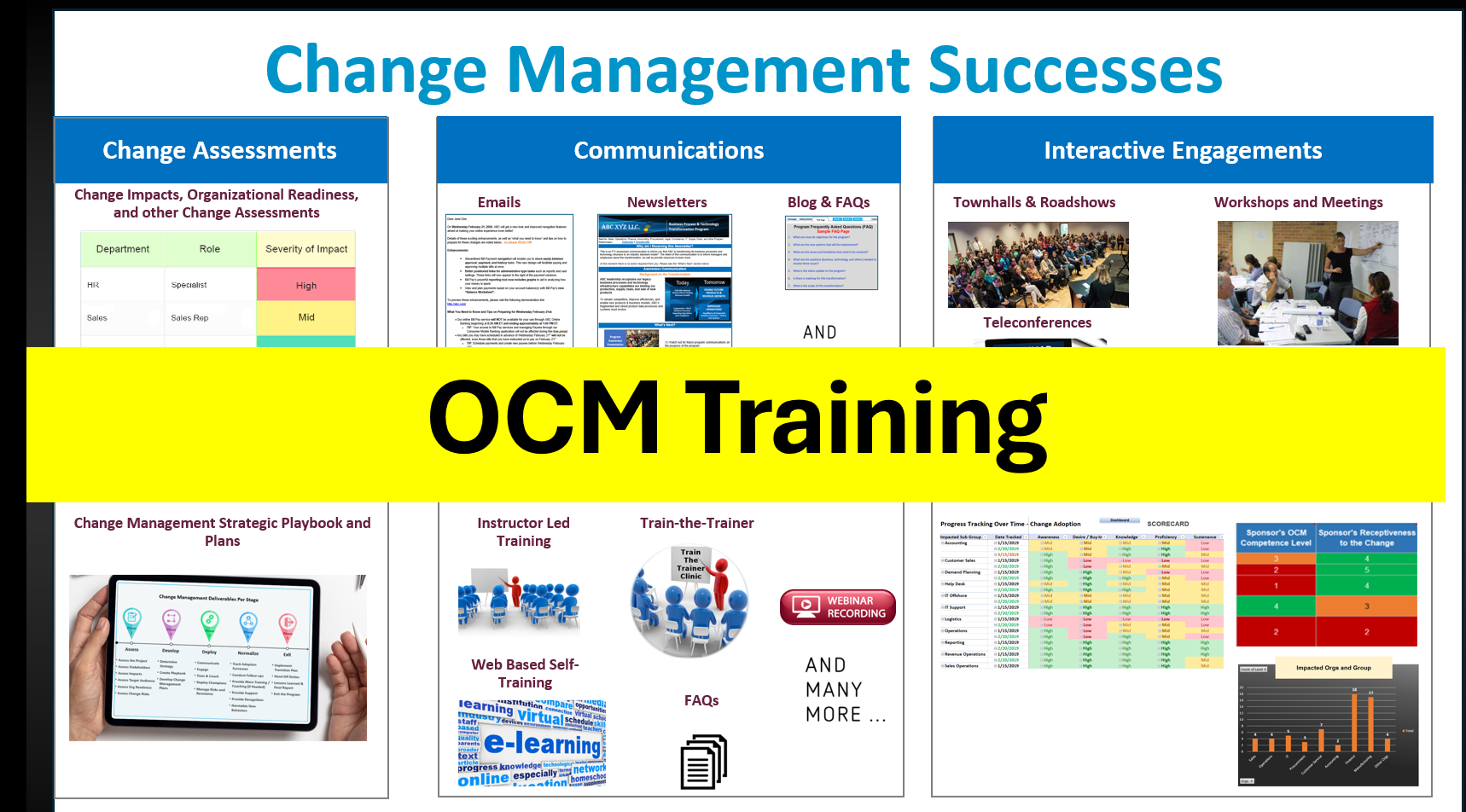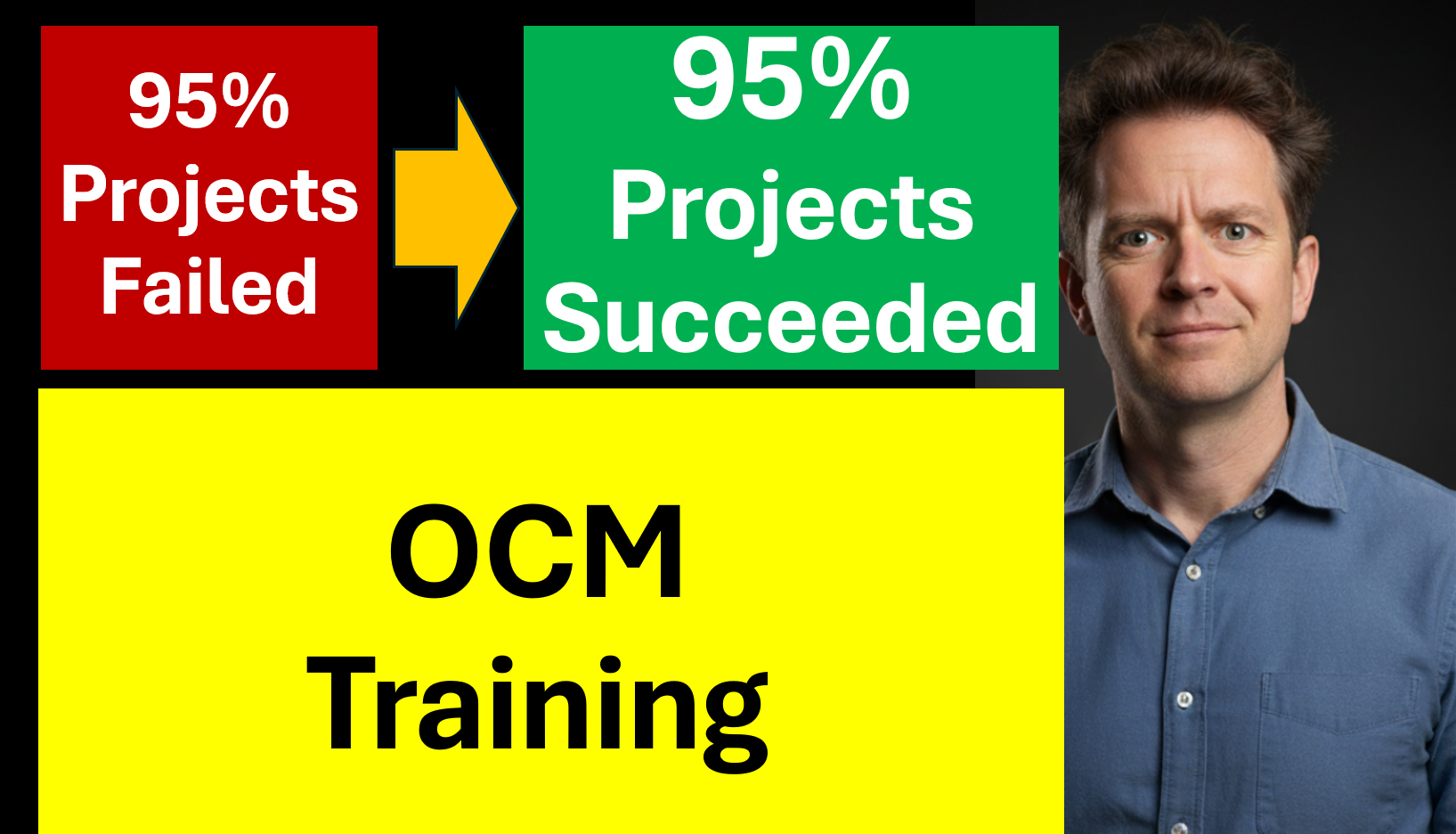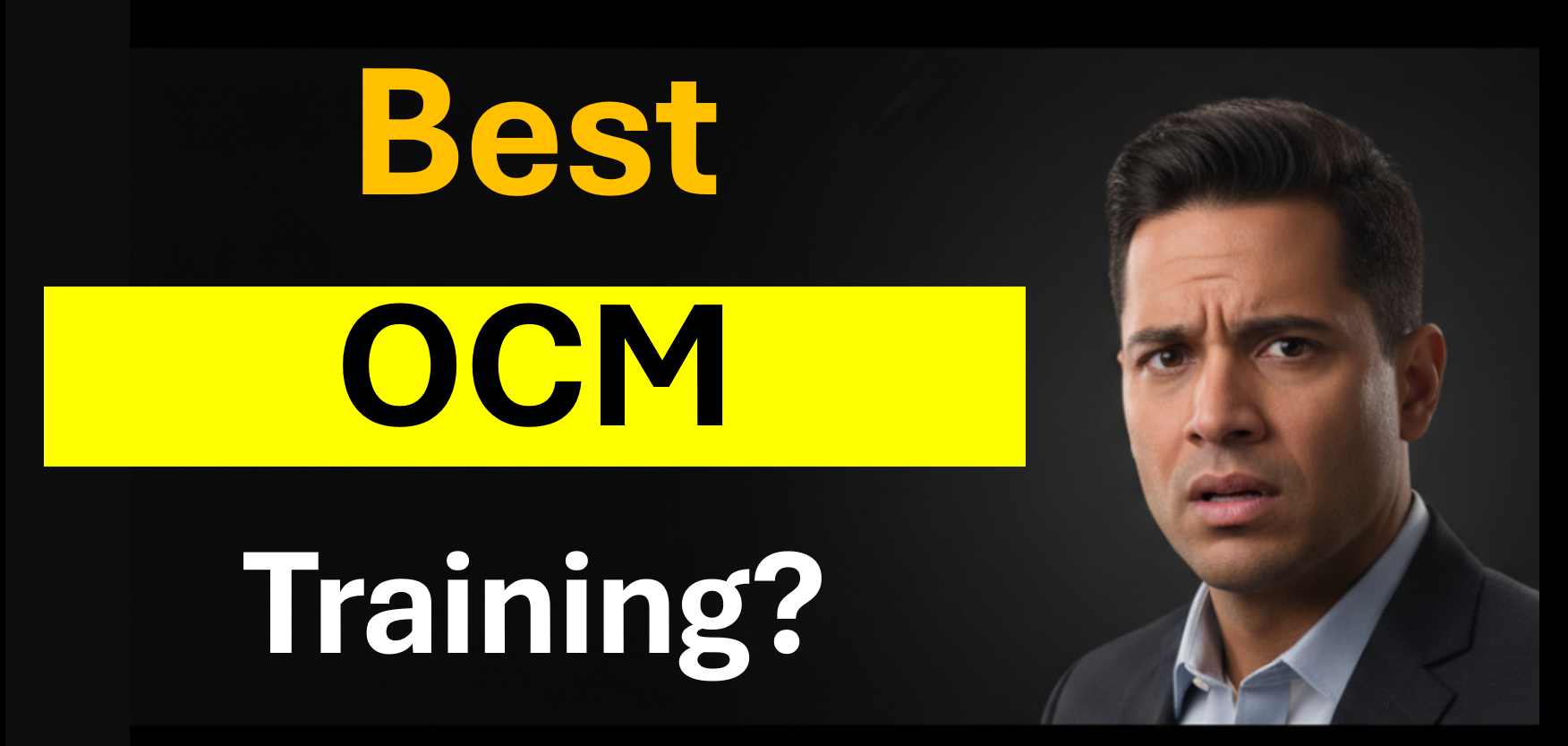Organizational Change Management Training: Everything You Need to Know
Organizations today face constant transformation. From digital initiatives and AI adoption to ERP implementations, mergers, and culture change, leaders are expected to guide their people through disruption while still delivering business results.
Let’s get started
Watch this video:
or
read the guide below.
Yet despite billions spent on new technologies and programs, most change efforts fail to achieve their intended outcomes. Why? Because they underestimate the people side of change.
That’s where organizational change management (OCM) comes in. Unlike project management, which focuses on technical tasks, OCM ensures people adopt and sustain new ways of working. And mastering it requires structured learning and training.
This article serves as a complete training guide on organizational change management. Whether you’re new to the field, a project manager adding OCM to your skillset, or a leader who wants to better support change, this guide covers everything you need to know.

What Is Organizational Change Management?
Organizational Change Management (OCM) is a structured methodology for helping individuals, teams, and organizations transition from a current state to a desired future state. It’s about preparing, equipping, and supporting people to adopt new processes, technologies, or cultural behaviors.
Key aspects include:
People-centered approach: OCM focuses on how change impacts employees.
Structured process: It provides phases, plans, and frameworks to manage adoption.
Sustainment focus: Beyond go-live, OCM ensures new behaviors stick and value is realized.
Think of project management as delivering the “what” – the system, process, or tool – and OCM as delivering the “how”, ensuring people actually use it successfully.
Why Organizational Change Management Matters
Without structured OCM, even the best initiatives can fail. Consider the following:
High failure rates: Studies show up to 70% of transformation projects miss their goals because adoption lags.
Resistance: Employees resist due to fear, uncertainty, or lack of clarity.
Leadership gaps: If leaders don’t model or reinforce new behaviors, employees won’t follow.
Change fatigue: When organizations overload employees with initiatives, adoption drops.
Effective OCM ensures that projects not only launch but deliver measurable business outcomes.
Core Concepts of Organizational Change Management
To build a strong foundation, OCM practitioners and leaders must understand several core concepts:
Sponsorship and Leadership
Leaders must be visible and active in change efforts. Their role is to model behaviors, communicate importance, and reinforce adoption.
Communication
Clear, ongoing, audience-specific messaging is critical. Communication should explain the “why” behind the change and give employees a voice.
Training and Enablement
Employees need the right skills and resources to adopt new tools or behaviors. Training, guides, and job aids increase confidence and reduce resistance.
Change Champions
Networks of local advocates help spread the message, provide peer-to-peer support, and identify resistance early.
Resistance Management
Resistance is normal. The goal is to surface it, understand concerns, and address them constructively.
Reinforcement
Sustaining adoption requires recognition, celebration, and embedding new behaviors into performance systems.

The 360° Change Management Framework for OCM Training
To apply these concepts consistently, OCM professionals use structured frameworks. One proven model is the Repeatable 360° Change Management Framework, which guides organizations through four phases.
1. Assess
Mobilize the OCM team and align with project scope.
Identify risks, resistance, and impacted stakeholders.
Assess readiness and change saturation.
Establish an adoption baseline for measuring progress.
2. Develop
Create OCM strategies and a playbook for consistent practices.
Build detailed communication, training, and engagement plans.
Align the OCM roadmap with project milestones.
Ensure OCM is integrated into project governance.
3. Implement
Launch communications to build awareness and readiness.
Kick off change champion networks for peer support.
Enable leaders with coaching and toolkits.
Train and equip impacted users with the skills they need.
Monitor resistance and provide feedback channels.
Track adoption metrics and share insights with leadership.
4. Normalize
Continue communications after go-live to reinforce adoption.
Provide ongoing support, training, and office hours.
Collect feedback and continuously improve.
Recognize success and reinforce desired behaviors.
Track value realization, not just adoption.
Transition OCM responsibilities to business-as-usual teams.
This lifecycle ensures adoption is achieved, sustained, and tied to business outcomes.

Real-World Applications of OCM Training
OCM training is relevant across diverse initiatives:
ERP/CRM/HCM Implementations – Ensures employees transition from legacy systems to new platforms effectively.
Digital Transformation and AI – Helps employees embrace automation, analytics, and new ways of working.
Culture and Mindset Change – Embeds new values and leadership behaviors.
Mergers and Acquisitions – Reduces uncertainty and integrates people, processes, and culture.
In each case, OCM training equips professionals and leaders with the tools to navigate complexity and achieve adoption.
Best Practices in Organizational Change Management Training
For effective OCM training, organizations should follow these best practices:
Blend theory with practice: Cover frameworks but also provide real-world case studies.
Focus on leadership: Train leaders on their role as sponsors and models of change.
Build toolkits: Provide templates for stakeholder analysis, communications, and adoption tracking.
Emphasize sustainment: Ensure training covers reinforcement and value realization.
Encourage community: Networks of practitioners and champions accelerate learning and adoption.
Leverage technology: Use digital adoption platforms and OCM software to support training and execution.
Building OCM Capability in Your Organization
Organizations can embed OCM capability by:
Establishing dedicated OCM roles or teams.
Training project managers and HR leaders in OCM fundamentals.
Embedding OCM into PMO governance.
Providing access to toolkits, templates, and software.
Tracking OCM maturity through assessments and value realization metrics.
Over time, this builds an organizational culture that is resilient and adaptable.
Conclusion
Organizational Change Management is no longer optional. It’s a core competency for any organization facing transformation. By investing in OCM training, you equip leaders, practitioners, and employees with the skills to reduce resistance, drive adoption, and achieve sustained value.
The Repeatable 360° Change Management Framework provides a roadmap for consistent, scalable success. When combined with practical training, toolkits, and leadership engagement, OCM becomes a strategic capability that delivers measurable business outcomes.
Note: Content on OCM Solution's ocmsolution.com website is protected by copyright. Should you have any questions or comments regarding this OCM Solutions page, please reach out to Ogbe Airiodion (Change Management Lead) or the OCM Solutions Team today.
It is structured learning that equips professionals and leaders with the knowledge, frameworks, and tools to manage the people side of change.
It ensures that initiatives deliver adoption and value, not just technical completion.
Change managers, project managers, HR leaders, IT professionals, and executives responsible for transformation.
Common models include ADKAR, Kotter’s 8 Steps, and the 360° Change Management Framework.
It reduces resistance, improves adoption, protects ROI, and builds organizational resilience.What is organizational change management training?
Why is OCM training important?
Who should take OCM training?
What frameworks are used in OCM training?
How does OCM training benefit organizations?
